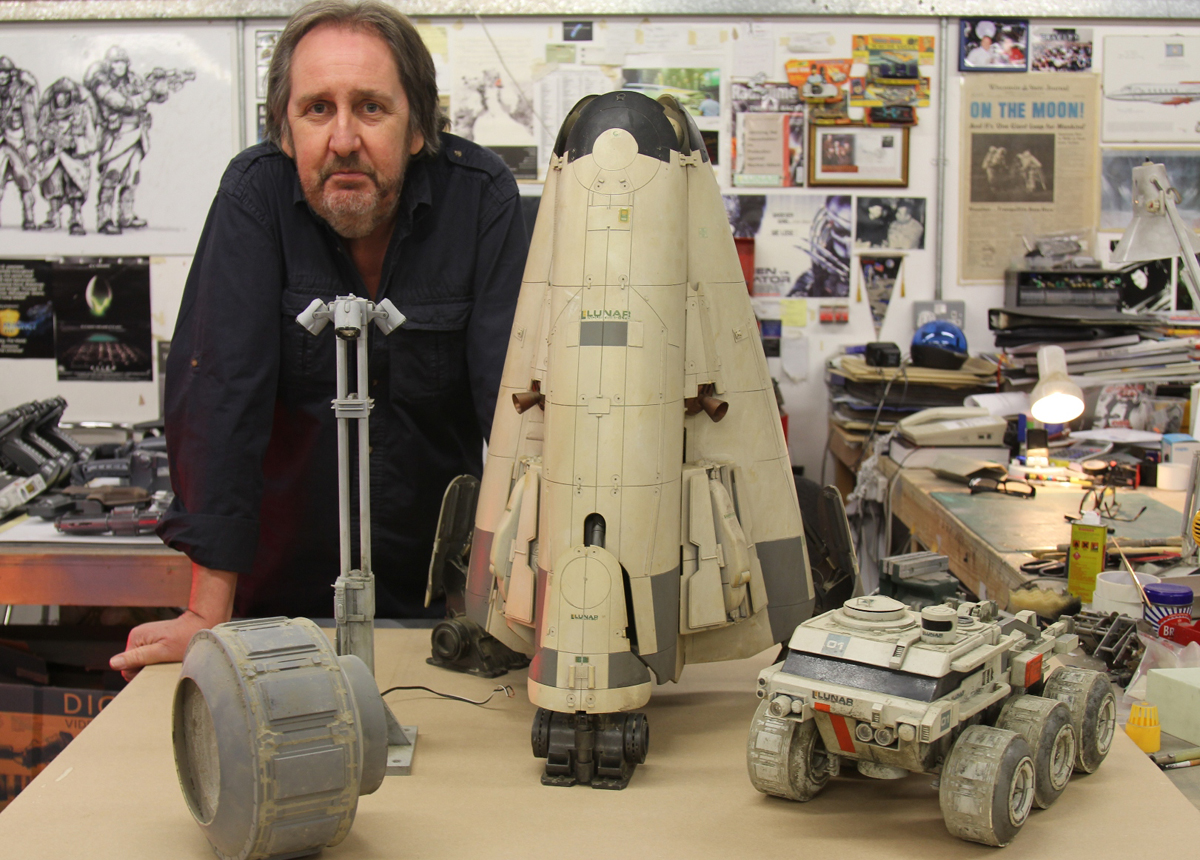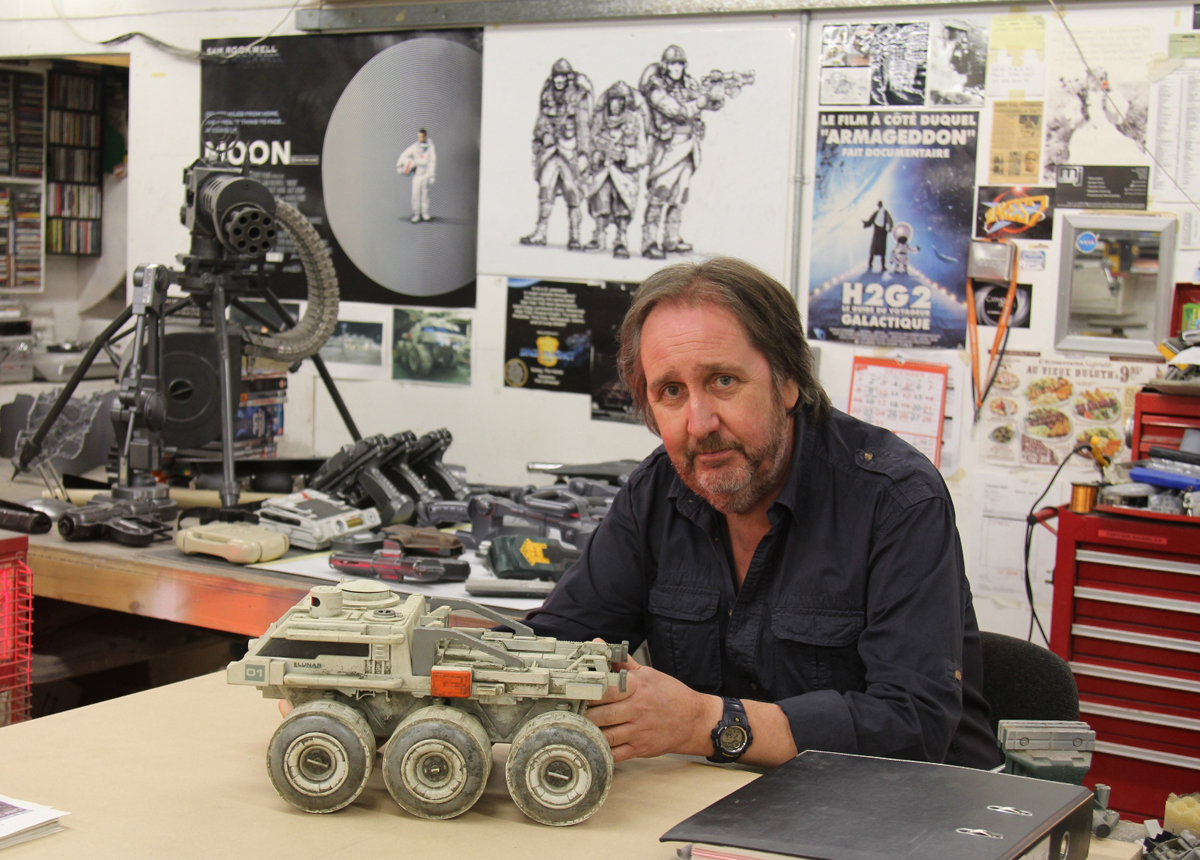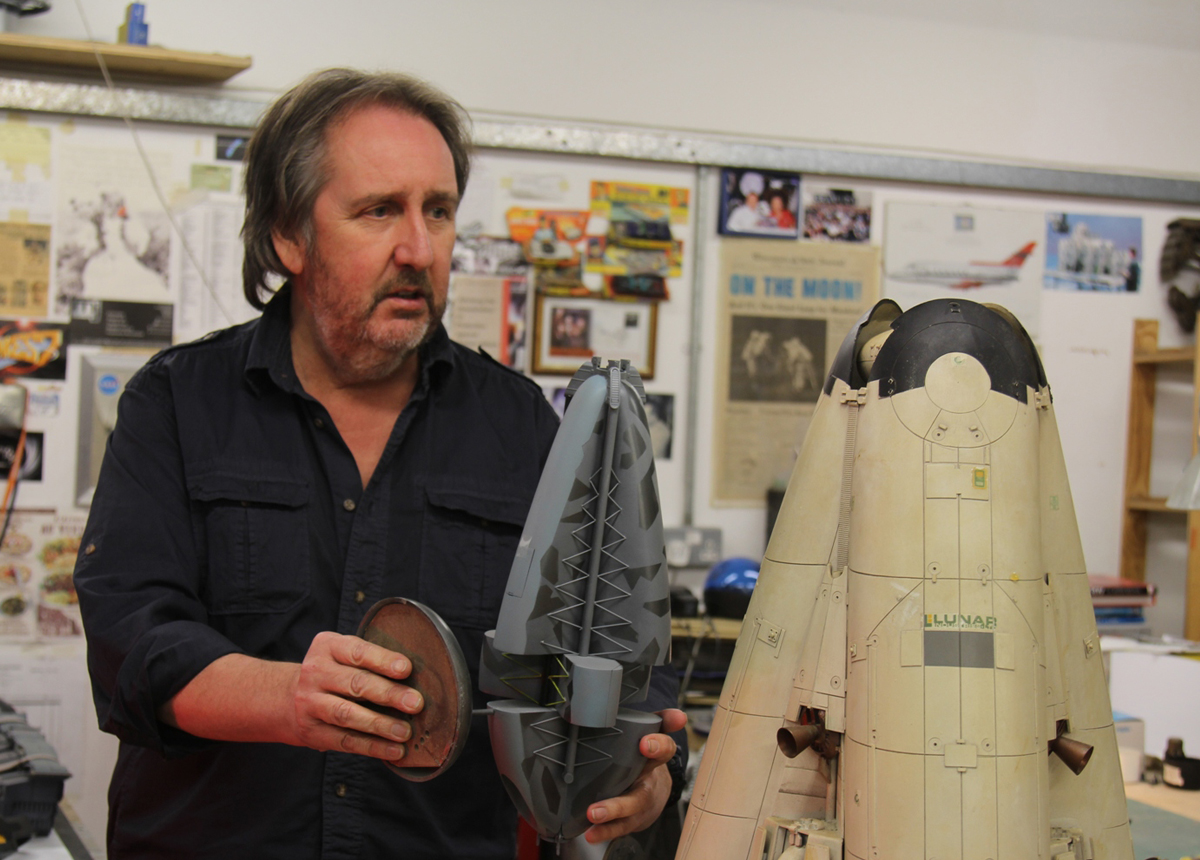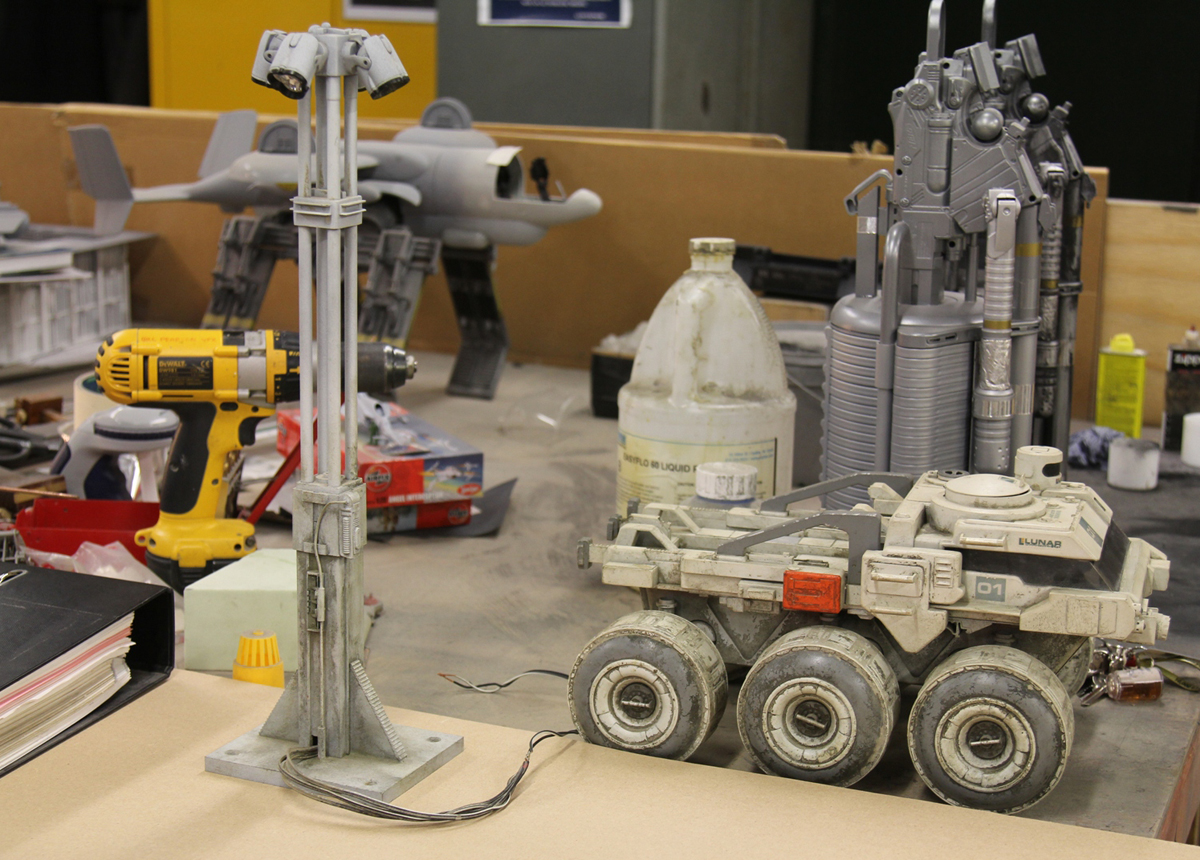The models of Moon - an interview with Bill Pearson
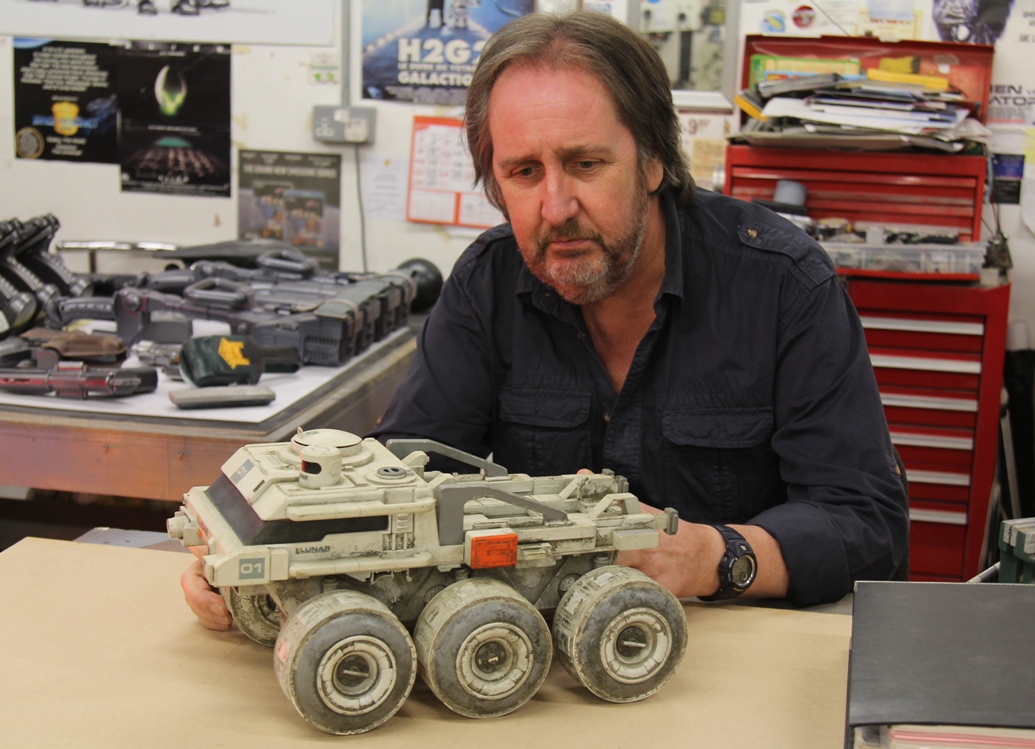 Moon premiered in early 2009 at the Sundance film Festival and later that year saw general release in the United States and the United Kingdom. Co-written and directed by Duncan Jones the film stars Sam Rockwell as Lunar Industries astronaut Sam Bell who is nearing the end of a three year mission on the far side of the moon. Since its release Moon has attracted a small cult following, this is in part attributable to the use of model miniature effects rather than the more modern approach of creating the effects digitally. Director Duncan Jones worked closely with designer Gavin Rothery and Bill Pearson (Alien, Outland) to create the model miniatures required.
Moon premiered in early 2009 at the Sundance film Festival and later that year saw general release in the United States and the United Kingdom. Co-written and directed by Duncan Jones the film stars Sam Rockwell as Lunar Industries astronaut Sam Bell who is nearing the end of a three year mission on the far side of the moon. Since its release Moon has attracted a small cult following, this is in part attributable to the use of model miniature effects rather than the more modern approach of creating the effects digitally. Director Duncan Jones worked closely with designer Gavin Rothery and Bill Pearson (Alien, Outland) to create the model miniatures required.
In February 2014 The Prop Gallery visited Bill’s work shop at Shepperton Studios where he was reunited with a number of the original filming miniatures he and his model team created for the film. We took the opportunity to ask Bill some questions about his time on the production of Moon.
The Prop Gallery: So Bill, how were you first approached to work on Moon?
Bill Pearson: Duncan (Jones) had an office here at the studios (Shepperton) I didn’t know they were there and I got a phone call from Mike Shaw, Mike is a very good friend of mine, and he said “Bill, these guys are coming around to see you, they will be there in about an hour”, I thought well I haven’t got time to clean up they’ll just have to take me as I am! Anyway so they came around, there was Duncan and Gavin (Rothery) about seven of them I think and Duncan said “I hear you do good space helmets” so I showed him one I did for Lost in Space, he asked if I could do a couple, I asked what they we doing and he said “Moon”, he started talking about rovers and moonbases so I said that I could do all that and that’s where it all started.
TPG: Gavin Rothery did some great design work including the rovers and harvester and the miniatures looked just great on screen.
BP: To be honest I think Gavin is the most underrated member of the team; he was so instrumental when you look at it. He would come around and we would just sit down and go through the stuff, he’d done some animatics and I said to him that the rovers had to be one-twelfth scale; it wouldn’t work in one-sixth because we just couldn’t afford it. I mean we had the shots with them going into the garage and that could never be one-sixth scale, it would have been massive, the money just wasn’t there.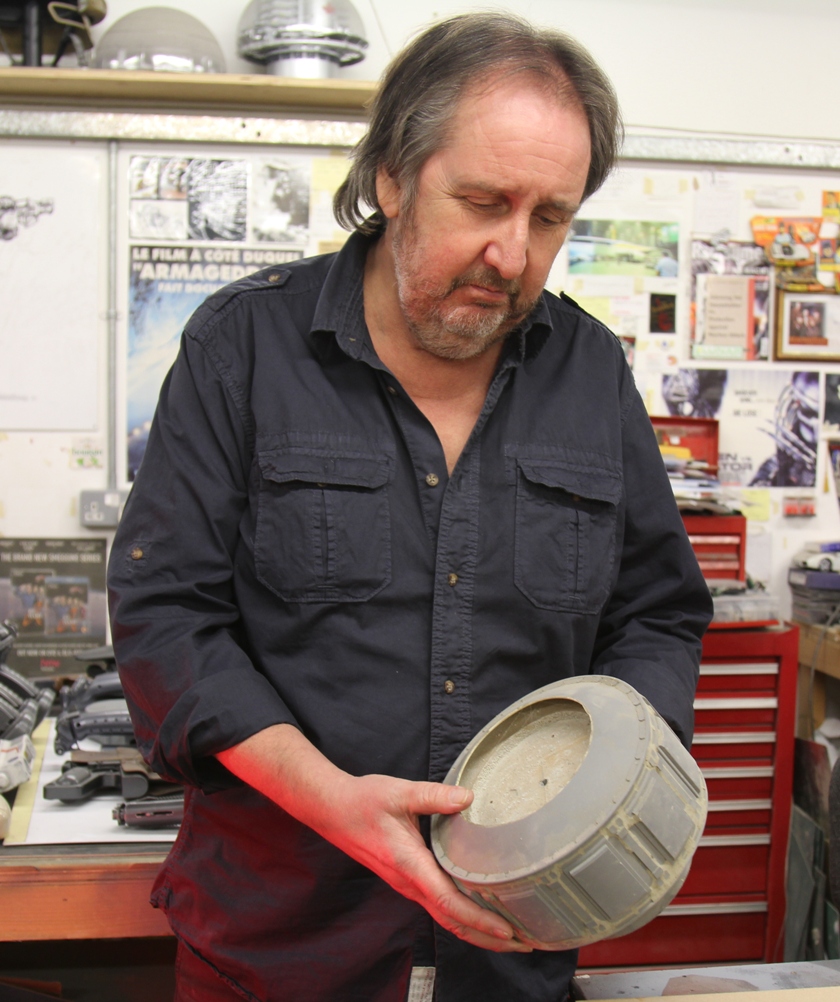
TPG: You did build the one rover miniature in one-sixth scale though?
BP: That’s right, we made one in one-sixth scale with three interchangeable backs, it was just logistics, we couldn’t make the moon base that big, not in one-sixth scale, The main harvester was 1:12 scale, its only at the crash where you’ve got the shot of the rover downed that we made a harvester section larger scale.
TPG: This is an original one-sixth scale rover wheel, what’s the story with this one?
BP: Yeah, what we did with that, that was the original for all the wheels, the master, after we had moulded it we put welding rod through the centre and made tracks on the surface with it so we didn’t have to pick up the whole thing up and put it down and roll it, that’s why it’s still gunged up.
TPG: We saw Steve Howarth recently; I believe he had quite a hand in building the rover miniatures?
BP: Oh yeah, Steve did, so did John Lee, Richard St Clair, lots of people, Ron Hone who built R2D2, he did the chassis on them, especially on the one-sixth scale because we had that radio controlled, only the steering, the rest was just push me pull you. We all worked on them, Chris Hayes was doing the helmets, Steve was staying at night and doing Gerty, he did most of Gerty.
TPG: How closely did you follow Gavin’s design work?
BP: We built the rovers to exact specs that he gave us, we got the drawings and took them just down the road to a graphics company and got them enlarged to actual size, same with Gerty, Gerty was 100% what he had designed, and then we just made them up.
TPG: Another model we have here today is the return craft which is another really great piece of design.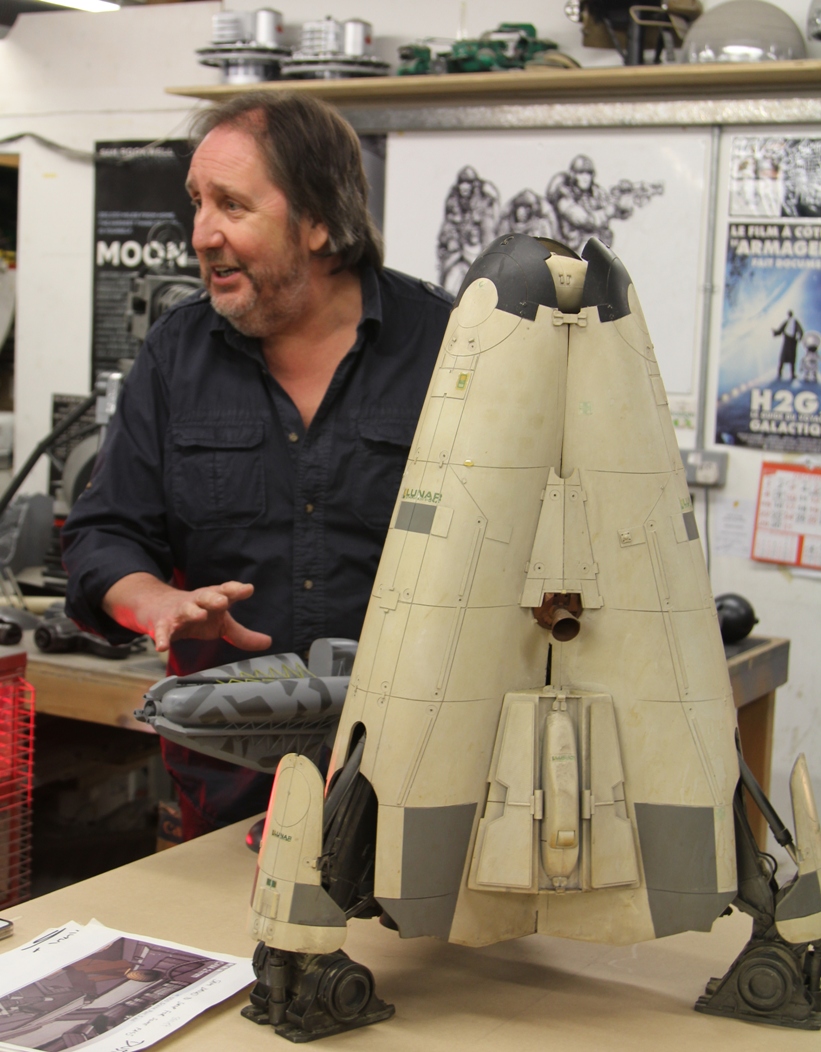
BP: I’ve actually got what that was made from, it was originally for a comedy science fiction thing called Dog Star that never happened, I designed this spaceship and decided to make it as big as possible, I made some sections but it never got any further and I had them on the shelf, we saw the return ship and it was a simple cone and I said “I’ve got that stuff up there” so we got it down and I had some bits from Casino Royale, some dressing, and I said to John Lee we should cobble it together and use those for landing legs so that’s really how the return craft was designed. The original design was just a cone, that’s what we got from Gavin.
TPG: So was all the model miniature work filmed here at Shepperton Studios?
BP: Yeah, I was told to speak to the line producer so I asked her where we were going to shoot and she said she had a workshop, I said you need a stage, you need to be able to hang drapes and get the camera around the set, this workshop was tiny, with skylights! She said money was tight so I asked what they could afford for the model shoot and she told me and I remember thinking you have to be joking. Anyway I phoned Dave, a good friend of mine here and explained we were in trouble and this shoot was going to look dreadful, I asked him what we could have for nine days and luckily there was a strike and so there were some stages free and he said we could have E Stage. So it was all done on E Stage, the set was never really big enough but it was extended digitally which worked very well in the end.
TPG: I recall you telling us last year about the problems you had on the model set, can we revisit that?
BP: Yeah, normally we’d do a lunar scape with cement and we were told by health and safety that we couldn’t use it. Cement is a perfect colour and texture and it’s cheap but we couldn’t do that so I went into Sainsbury’s and bought some cat litter and then got some black and white powdered poster paint to tint the cat litter, we put it in paint kettles and just stirred it in.
TPG: How did you create the rest of the lunar scape?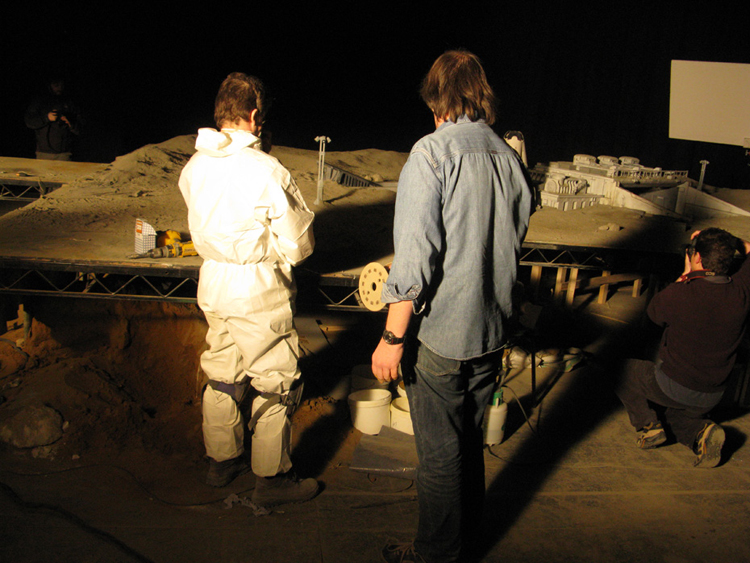
BP: We needed hills and Duncan gave us a black and white book of lunar photographs and said “That’s what I want it to look like”. I thought how are we going to do that, we didn’t have the money to sculpt them in polystyrene you know, so we got some sand in, we put damp sand down and sort of sculpted the shapes but damp sand isn’t lunar grey unfortunately. Steve Howarth came to the rescue and said he knew a company who did felt in all different colours so we phoned them and they sent through 5 different greys and I said “That one, that’s lunar grey!” So we put this on top of the sand and stapled it so it roughly took the shape of the landscape we’d made out of sand and then we went ahead with our cat litter concoction and I think at the end of the day that mixture was more lethal than the cement we wanted to use originally!
TPG: Ultimately it all looked good on screen and that’s what counts right? Did Duncan have a very specific vision about how he wanted the whole thing to look?
BP: Yeah. It was a nine day shoot I think and I said we needed to see the work on the screen before we do any more to see if it works or not. So we went along and are all sitting in the viewing theatre and Duncan said “They’re kicking up plumes of dust and its hanging there” and I went “Yeah, it’s cool isn’t it?” and he said “No, There is no air, that looks wrong”, and so he showed us some footage and asked if we could make it work just like that. We were shooting later that day and I was thinking what the hell can we do, so we got some spray bottles and wetted everything down in between each take and the rovers went over and left the track imprints in it and it kept the dust down. As we went on throughout the shoot the cat litter got clumpy and we hadn’t thought of that, as the wheels went across they started picking up clumps of the stuff and as they went round they would drop bits off and it looked brilliant, so that wasn’t done by Cinesite digitally, that was a pure lucky accident!
TPG: Well thanks for chatting to us Bill and you must be pretty pleased with the way it all turned out?
BP: I think Sam’s performance was the best thing about the movie and I’m just glad we could actually add to that!
The Prop Gallery would like to thank Bill Pearson.

